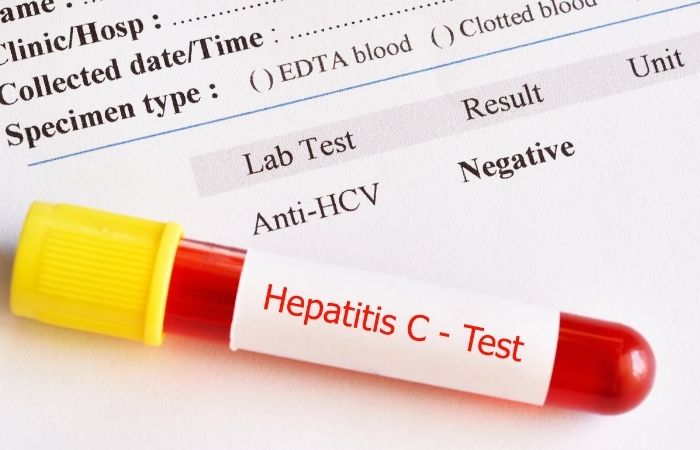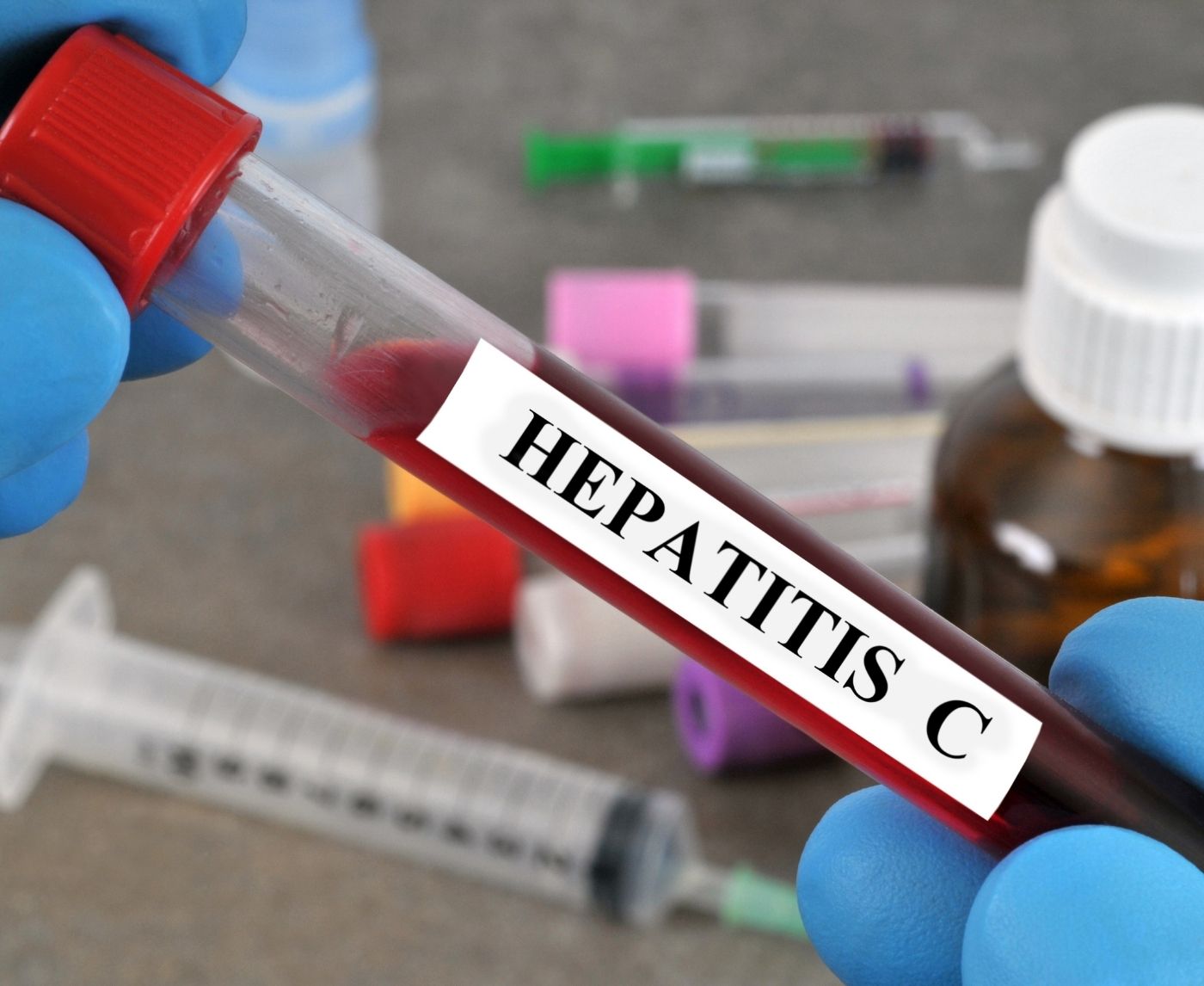Why Low STI Rates Aren’t Always Good News: What Grand Erie’s Health Profile Really Tells Us
Quick Answer: Hepatitis C and fatty liver can cause similar symptoms like fatigue, bloating, and abnormal liver tests. But Hep C is viral, can be asymptomatic for years, and may go undetected without specific testing, even in people without known risk factors.
When Your Liver Starts Whispering (Not Screaming)
Both fatty liver disease and hepatitis C are slow-moving, often silent invaders. Early symptoms rarely show up like a flashing red light. Instead, they’re the kind of things people chalk up to stress, age, or diet: sluggishness, vague abdominal discomfort, and a fullness after eating that doesn’t match your portions. Some describe a kind of mental fog, like their brain is walking through soup.
That’s the problem. These symptoms aren’t specific. They don’t scream “viral infection” or “organ under siege.” They feel more like general wear and tear. In Jenna’s case, her doctor initially assumed alcohol was the culprit, given her history. But that assumption masked something that had likely been active in her body for over a decade.
Fatty liver disease, whether caused by alcohol (ALD) or not (NAFLD), happens when fat builds up in the liver faster than the organ can process it. Over time, that fat triggers inflammation, which can progress to cirrhosis. Hepatitis C, on the other hand, is a viral infection that hijacks liver cells, silently causing damage even when your lifestyle looks squeaky clean.
Here’s what most people don’t realize: you don’t need to be an IV drug user, tattoo enthusiast, or high-risk traveler to contract Hep C. You could have gotten it from a medical procedure before 1992. From dental work overseas. From a partner who never knew they had it.

People are also reading: The Forgotten STD: Why No One Talks About Donovanosis (Until It’s Too Late)
Symptom Showdown: Hep C vs Fatty Liver
So how do you tell the difference when your body isn’t offering clear answers? While both conditions affect the liver and can present similarly, there are subtle differences in what they feel like, and when.
Table 1. Shared and distinguishing symptoms of fatty liver disease and Hepatitis C. Note the overlap, and the subtleties that make self-diagnosis dangerous.
In a study published by the World Journal of Gastroenterology, researchers found that over 30% of chronic Hepatitis C cases were initially misdiagnosed as non-alcoholic fatty liver disease due to shared biomarkers and symptoms. This overlap isn’t just academic; it’s a delay in treatment that can cost years of liver health.
If you’ve been told your liver enzymes are high, or if you’re dealing with vague but stubborn symptoms, this is your moment to pause and ask: have I ever been tested specifically for Hepatitis C? Not just screened for general liver function, but tested for the virus?
If you haven’t, you can start with an FDA-approved at-home kit like the Hepatitis C Test Kit. It’s quick, private, and doesn’t require a lab visit. In fact, many people diagnosed today find out at home.
How Damage Happens, Even Without Symptoms
By the time Jenna got her Hep C diagnosis, her liver had already been inflamed for years. The irony? She felt “fine,” except for a little brain fog, the occasional bloated evening, and a vague tiredness she blamed on work stress. “No one ever mentioned Hep C as a possibility,” she said. “Not when I had a miscarriage. Not during my annual exams. Not even when my liver numbers looked off.”
This isn’t rare. Hepatitis C can live inside the body for 10, 20, or even 30 years before showing up as real damage. For many, the first sign isn’t a symptom; it’s cirrhosis. Or liver cancer. Or a routine blood test that spirals into panic.
In contrast, fatty liver disease tends to develop alongside visible risk factors, such as obesity, diabetes, high cholesterol, or alcohol use. Its damage is metabolic and inflammatory, but rarely viral. Still, both conditions end in the same place if ignored: scarring, liver failure, and a race against time.
Table 2. Side-by-side progression of fatty liver disease and chronic Hepatitis C. Both can end in liver failure, but only Hep C is curable with antiviral therapy.
Unlike fatty liver, which requires long-term lifestyle changes, hepatitis C is now curable. Modern antiviral regimens, like sofosbuvir-ledipasvir (Harvoni) or glecaprevir-pibrentasvir (Mavyret), can clear the virus in 8 to 12 weeks in over 95% of cases. But you can’t treat what you don’t test for.
And here’s where timing matters. According to the CDC, people born between 1945 and 1965, or anyone with even a one-time risk exposure, should be tested at least once. The World Health Organization goes further, recommending expanded universal testing, including for people with no known risk factors, due to the virus’s stealthy nature.
But I Don’t Have Risk Factors… Right?
If you’re reading this and thinking, “That can’t be me,” let’s talk about what really counts as a risk factor for Hep C. This isn’t just about sharing needles. Many cases trace back to:
A single transfusion before 1992. A dental procedure in a country with lax sterilization. Sex with a partner who never knew they were infected. A shared razor. A tattoo at a friend’s house. Even childbirth, Hep C can pass from mother to baby silently.
Jenna’s case? She had a C-section in the late 90s at a hospital that didn’t test donated blood properly. No one told her she was at risk. She had two kids, multiple partners, years of missed symptoms, and not one person suggested Hep C testing until it was nearly too late.
This is why we need to move testing away from shame-based conversations and toward routine care. Testing doesn’t mean you’ve done something wrong. It means you want to know what’s happening in your body, and you deserve answers without judgment.
If you’ve had odd symptoms or liver flags on labs, consider starting with a simple home kit like the Hepatitis C Test Kit. It’s confidential, fast, and built for moments like this, when a “maybe” needs clarity.
How Testing Works (And When to Do It)
Hepatitis C doesn’t show up on routine cholesterol or liver panels. You need a specific antibody test. This can be done through blood at a clinic or fingerstick at home. If the antibody is present, a second confirmatory test (RNA PCR) checks for active infection.
Fatty liver is usually found via ultrasound or a combination of high ALT/AST levels and metabolic indicators like triglycerides and insulin resistance. But again, one doesn’t rule out the other. You can have both. You can be managing your weight, drinking less, and still have a chronic virus simmering inside your liver.
The typical window period for Hepatitis C antibody detection is around 6 to 9 weeks after exposure. But many people are diagnosed years after the fact, especially if they were infected in childhood or young adulthood. That’s why a one-time test is recommended regardless of symptoms.
In contrast, fatty liver often builds slowly and is found accidentally during unrelated imaging. It isn’t tested for directly, you find signs of it, then investigate further. But both conditions respond better to early awareness than late regret.
Testing timelines aren’t about judgment, they’re about accuracy. If you think you might have been exposed or if your symptoms linger without clear answers, get tested now and again later.
Testing at Home vs the Clinic: What You Need to Know
Not everyone wants to explain their sex life, their tattoos, or their past surgeries to a stranger in a white coat. That’s one of the reasons more people are choosing at-home Hep C tests. The science has caught up, today’s rapid test kits can detect Hepatitis C antibodies using just a few drops of blood and give results in minutes. No lab visits. No awkward questions.
Clinic tests still have a place, especially if you want a confirmatory RNA test or need follow-up care. But starting at home gives people privacy and time. It lets you process what’s happening before the system gets involved.
Table 3. Comparing Hepatitis C testing methods. Many start at home for privacy, then confirm through clinical labs if needed.
If your result is negative but symptoms persist, or if your exposure was recent, consider retesting in 4 to 8 weeks. If it’s positive, don’t panic. Antiviral treatment is highly effective, and most people clear the virus completely with no hospital stay, no injections, and no long-term damage if caught early.
Don’t wait and wonder, get the clarity you deserve. This at-home Hep C test is discreet, fast, and can bring peace of mind without leaving your couch.
“I Have Hep C.” Now What?
Jenna got her positive result in the mail and spent 10 minutes staring at the kitchen wall. She didn’t feel sick. She didn’t want to call anyone. But she also didn’t want this thing silently eating away at her liver.
She searched online for treatment, called a local clinic, and got connected to a liver specialist within three weeks. She started antivirals shortly after. Twelve weeks later, she was cured. “I still don’t know how I got it,” she said. “But I know I’m clean now. I know my liver is healing. I know I’m not a danger to anyone.”
That’s the transformation we don’t talk about enough. Yes, Hepatitis C can cause serious harm. But caught early, it’s one of the most curable chronic infections out there. It doesn’t make you dirty. It doesn’t make you irresponsible. It just means you picked up a virus that millions of others also carry, often without knowing.
And if you do test positive, your next step isn’t shame, it’s action. Most insurance covers treatment. Many states have assistance programs. And your partners? They deserve clarity too. Letting them know can be hard, but it’s also an act of care, not confession.

People are also reading: When Endometriosis Symptoms Might Actually Be Chlamydia or PID
FAQs
1. Can Hepatitis C actually feel like fatty liver?
Totally, and that’s what makes it tricky. If you’re dragging through your day, bloated after meals, or your labs show slightly off liver enzymes, most docs lean toward fatty liver first. But Hep C can hide under those same symptoms for years. If your gut says something’s not right, test for both.
2. My liver numbers were normal. Could I still have Hep C?
Yes. Liver enzymes like ALT and AST can bounce around for all kinds of reasons, stress, Tylenol, even a weekend of bad sleep. Hepatitis C doesn’t always show up as a red flag in your labs. Some people walk around with chronic infection for decades and never see a blip, until real damage hits. That’s why targeted testing matters.
3. What’s worse: fatty liver or Hep C?
It’s not a competition, and both can mess with your body in big ways. Fatty liver is often tied to food, weight, or alcohol, but can be reversed if caught early. Hep C is viral and curable, but only if you know it’s there. The wild part? You could have both. Which is exactly why testing is so important.
4. Can alcohol give you Hep C?
Nope. Alcohol can wreck your liver, sure, but it can’t transmit Hep C. The virus spreads through blood, not booze. That said, mixing Hep C with heavy drinking is like tossing gasoline on a slow-burning fire. If you have (or had) either, your liver deserves some gentleness.
5. How long could someone have Hep C without knowing?
A long, long time. We’re talking 10, 20, even 30 years in some cases. A lot of folks don’t find out until their liver starts to fail, or they get screened for something totally unrelated. That’s why one-time testing is now recommended even if you feel “fine.”
6. Do I have to start treatment right away if I test positive?
You don’t have to, but you absolutely should. The meds now? Game-changers. No injections. No months of side effects. Just 8–12 weeks of daily pills and, for most people, the virus is gone. Cleared. Done. No more guessing. The sooner you start, the less damage done.
7. Is it really possible to get Hep C from sex?
Yes, but the risk is low, especially if there’s no blood involved. Still, certain kinds of sex (like rough or anal sex) can raise the chance of transmission, especially if there are cuts or sores. Condoms help. Honest convos help more. Want to be sure? Both of you test. That’s real intimacy.
8. Will insurance cover the cure?
These days, most plans, including Medicaid, cover Hep C treatment. It might take a little paperwork, maybe a genotype test, but it’s doable. And if you’re uninsured, there are patient assistance programs that can help cover or reduce the cost. Don’t let money stop you from getting cured.
9. Will I need a liver biopsy?
Not unless things are complicated. Most providers now use scans or non-invasive bloodwork to check liver damage. If your test shows you’ve got Hep C, you’ll probably get a FibroScan or similar test, not a needle. Biopsies are rare and only used when absolutely needed.
10. Can I still drink if I have Hep C or fatty liver?
Here’s the honest answer: it’s better not to. With fatty liver, quitting or cutting back gives your liver a break and can even reverse damage. With Hep C, especially untreated, alcohol fast-forwards the harm. It’s your call, but your liver’s already putting in overtime. Be kind to it.
You Deserve Answers, Not Assumptions
If you’ve been brushed off, misdiagnosed, or left wondering why your liver numbers don’t match your lifestyle, you’re not alone. The overlap between fatty liver disease and Hepatitis C is real, and deadly if ignored. But the good news is this: both are manageable. And Hep C? It’s curable.
Knowing what’s really going on inside your body is not an accusation, it’s liberation. Don’t wait for symptoms to scream before you listen. Whether you’re tired of being tired, confused by your labs, or just ready to stop guessing, testing gives you power.
Start with a private, accurate home test. The Hepatitis C Test Kit is fast, discreet, and built to give you clarity, without judgment, without delay.
How We Sourced This Article: We combined current guidance from leading medical organizations with peer-reviewed research and lived-experience reporting to make this guide practical, compassionate, and accurate. In total, around fifteen references informed the writing; below, we’ve highlighted six of the most relevant and reader-friendly sources.
Sources
1. CDC – Hepatitis C Information for the Public
2. WHO – Hepatitis C Fact Sheet
3. Clinical Overview of Hepatitis C | CDC
4. Clinical Screening and Diagnosis for Hepatitis C | CDC
5. Testing for Hepatitis C | CDC
About the Author
Dr. F. David, MD is a board-certified infectious disease specialist focused on STI prevention, diagnosis, and treatment. He blends clinical precision with a no-nonsense, sex-positive approach and is committed to expanding access for readers in both urban and off-grid settings.
Reviewed by: Sarah K. Lin, PA-C | Last medically reviewed: September 2025
This article is for informational purposes and does not replace medical advice.






